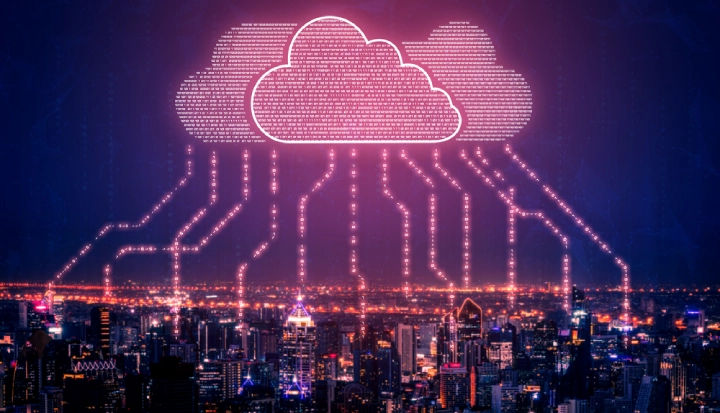
The first mention of the concept of cloud computing comes from the 1960s, even if it has only properly been around since the 2000s. Generally, cloud computing is an on-demand service to access applications, servers, data storage, development tools and network functions via the Internet.
There are various advantages to using cloud computing rather than traditional and manual IT, such as lower costs, improved agility and time-to-value, easier scale, and better storage capabilities.

Most companies, today, no longer need to maintain their own computing equipment or data centres and can instead rent access to everything from applications to storage from a cloud service provider, in order to increase flexibility. In particular, natural language processing and AI are also services provided by cloud computing. But what is it exactly?
How does cloud computing work?
Through satellite networks, information can be shared in the cloud. Every cloud application must have a host in charge of looking after the data centres that supply security, storage, and processing power. However, most of the time, users do not directly or actively handle these computer services.
Functions in large clouds are frequently dispersed over several sites, each of which is a data centre. Cloud computing often uses pay-as-you-go models, which can aid in lowering capital expenses and only relies on resource sharing to accomplish coherence.
In order to understand how cloud computing works, it is vital to define the different types of cloud computing delivery methods: public, private and hybrid cloud.
The first, which is the most common, enables access to public clouds from anywhere, through applications or web browsers and is utilised by household companies like Apple, Amazon, and Microsoft.
A private cloud offers a comparable level of freedom to a public cloud. Still, it is utilised on a larger scale, for example, in businesses that offer data storage and IT personnel. Additionally, private clouds typically provide greater security and fewer users.
Hybrid clouds, however, combine both public and private clouds, and they balance one another out. For instance, the public cloud can take over if the private cloud hits its storage capacity limit.
What are the advantages and disadvantages of cloud computing?
The fact that cloud computing has so many advantages and is so popular is not a coincidence. In addition to being quicker and more affordable than hardware installations, it is also more efficient.
Because it can expand to meet a company’s changing demands and is more dependable than on-site servers, the cloud is also relatively simple to scale. By giving choices for jump-starting and data recovery, it spares firms from having to invest in sophisticated equipment and ensures business continuity.
If one wants to check their email on any computer, one can. They can also have several backup copies of all their files. Cloud computing does, however, have some drawbacks.
First off, there are some security risks still there, particularly when it comes to sensitive and private data. Of course, there are solutions to stop data leaks, such as encryption, which safeguards important data. But if the key is misplaced, the information also vanishes.
Nothing is permanently set in stone in the world of technology. Servers could be unable to function effectively due to bugs, hiccups, and internal issues. Human error is still a possibility since multiple people having access to the same piece of data increases the risk of corruption or loss.






